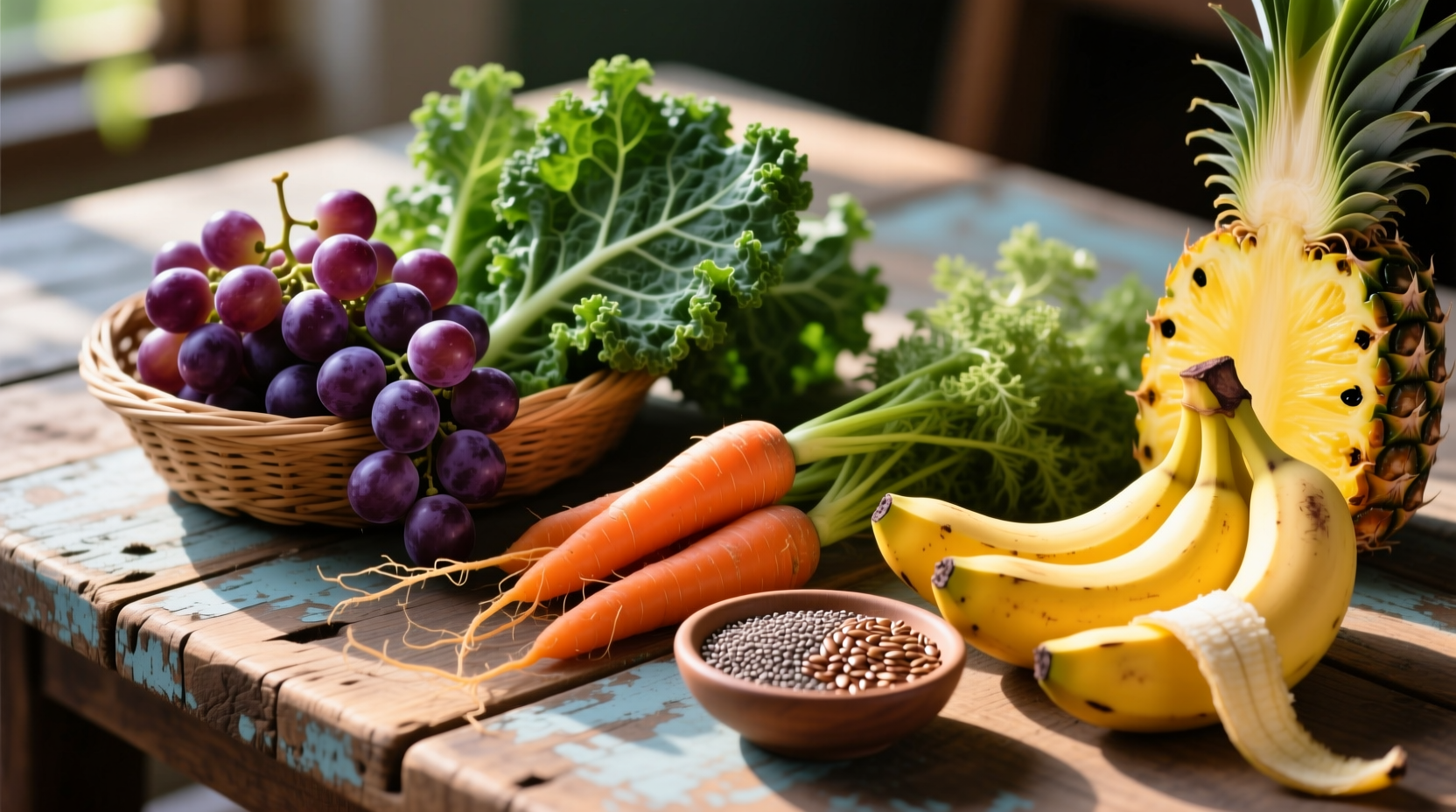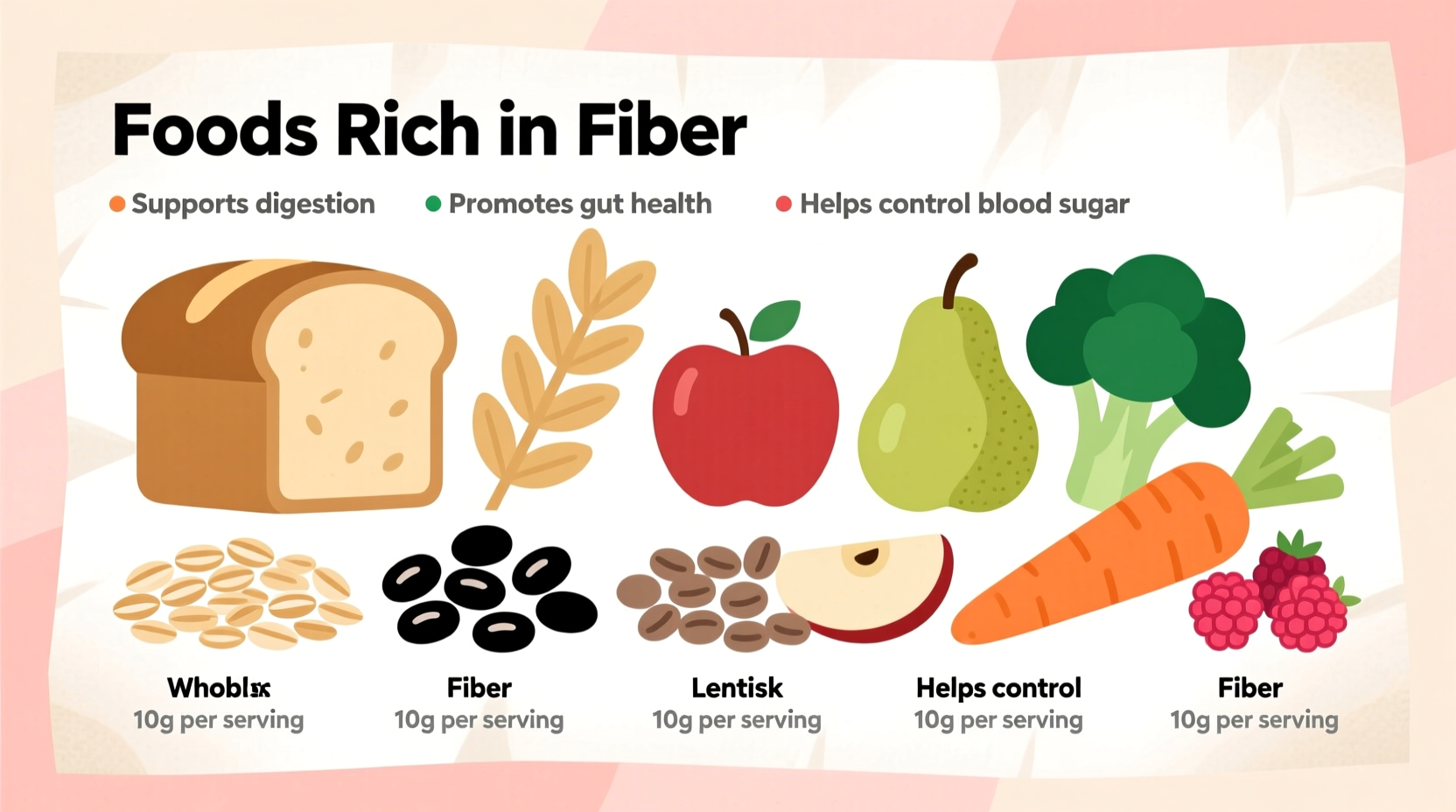Top high-fiber foods include raspberries (8g per cup), lentils (15.6g per cooked cup), chia seeds (10g per ounce), artichokes (10.3g per medium), and black beans (15g per cooked cup). Most adults need 25-38g of fiber daily, yet 95% fall short. This guide reveals science-backed fiber sources with practical integration tips to improve digestion, heart health, and blood sugar control.
Discover how simple dietary changes can transform your health. Fiber isn't just about avoiding constipation—it's a powerhouse nutrient linked to reduced risk of heart disease, diabetes, and certain cancers. Yet according to the 2020-2025 Dietary Guidelines for Americans, fewer than 5% of people meet their daily fiber requirements. This comprehensive guide cuts through the confusion with actionable information you can implement today.
Why Fiber Matters: Beyond Digestion
Fiber serves two critical functions in your body. Soluble fiber forms a gel-like substance that slows digestion, helping control blood sugar and lower cholesterol. Insoluble fiber adds bulk to stool, promoting regular bowel movements. The USDA's FoodData Central confirms that both types work synergistically for optimal health.
Here's what adequate fiber intake can do for you:
- Reduces risk of coronary heart disease by 9% for every 7g increase daily (per The Lancet 2019 analysis)
- Supports healthy gut microbiome diversity
- Increases satiety, aiding weight management
- Stabilizes blood glucose levels
Your High-Fiber Food Roadmap
Instead of overwhelming you with technical data, we've organized fiber-rich foods by how you'll actually use them in daily meals. This practical approach helps you build sustainable habits.
Breakfast Boosters: Start Your Day Right
Morning meals often lack sufficient fiber. These simple additions make a dramatic difference:
- Chia seeds: Just 1 ounce (2 tablespoons) delivers 10g fiber. Mix into yogurt or make overnight chia pudding
- Whole grain oats: 4g per cooked cup. Choose steel-cut over instant for maximum benefit
- Raspberries: 8g per cup. Add to smoothies or oatmeal for minimal added sugar

Lunch & Dinner Transformations
These strategic swaps dramatically increase your fiber intake without changing your favorite meals:
| Common Food | High-Fiber Alternative | Fiber Increase |
|---|---|---|
| White rice (1 cup) | Black beans (1 cup) | 12g more fiber |
| White bread (2 slices) | 100% whole wheat bread (2 slices) | 4g more fiber |
| Ground beef taco | Lentil taco filling | 13g more fiber per serving |
Smart Snacking Solutions
Replace processed snacks with these fiber-rich options that satisfy cravings:
- Popcorn: Air-popped provides 15g fiber per 5 cups—nature's original high-volume snack
- Almonds: 3.5g per ounce. Pair with an apple for 10g total fiber
- Guava: 9g per cup—higher than any common fruit
Special Considerations for Different Needs
Fiber requirements vary based on individual circumstances. Understanding these nuances prevents discomfort while maximizing benefits:
Fiber Intake Timeline for Beginners
If you're currently low-fiber, gradually increase to avoid bloating:
- Weeks 1-2: Add 5g daily (one small apple + 1/2 cup broccoli)
- Weeks 3-4: Add another 5g (chia seeds in smoothie)
- Weeks 5-6: Reach target range (25-38g depending on calories)
Always increase water intake simultaneously—fiber needs fluid to work properly. The National Institute of Diabetes and Digestive and Kidney Diseases recommends 8 cups of water daily when increasing fiber.
Avoiding Common Fiber Mistakes
Many people sabotage their efforts with these preventable errors:
- Mistake: Jumping straight to high-fiber supplements
- Solution: Get fiber from whole foods first; supplements only when necessary
- Mistake: Focusing only on insoluble fiber
- Solution: Balance both types—fruits/vegetables for soluble, whole grains for insoluble
- Mistake: Not reading labels on "high-fiber" products
- Solution: Check for added sugars—many fiber bars contain 15g+ sugar per serving
Practical Implementation Guide
Make these simple changes to your current routine:
- Batch cook legumes: Cook a large pot of lentils or beans weekly for easy additions to meals
- Upgrade your grains: Replace half your white rice with cauliflower rice initially, then transition to quinoa or barley
- Smart substitutions: Use pureed white beans in baking recipes to add fiber without changing taste
- Produce prep: Wash and cut vegetables immediately after shopping for easy snacking
Remember that frozen fruits and vegetables often retain more nutrients than fresh options that have traveled long distances. The FDA's research shows frozen produce can have higher vitamin content than "fresh" options shipped across continents.











 浙公网安备
33010002000092号
浙公网安备
33010002000092号 浙B2-20120091-4
浙B2-20120091-4